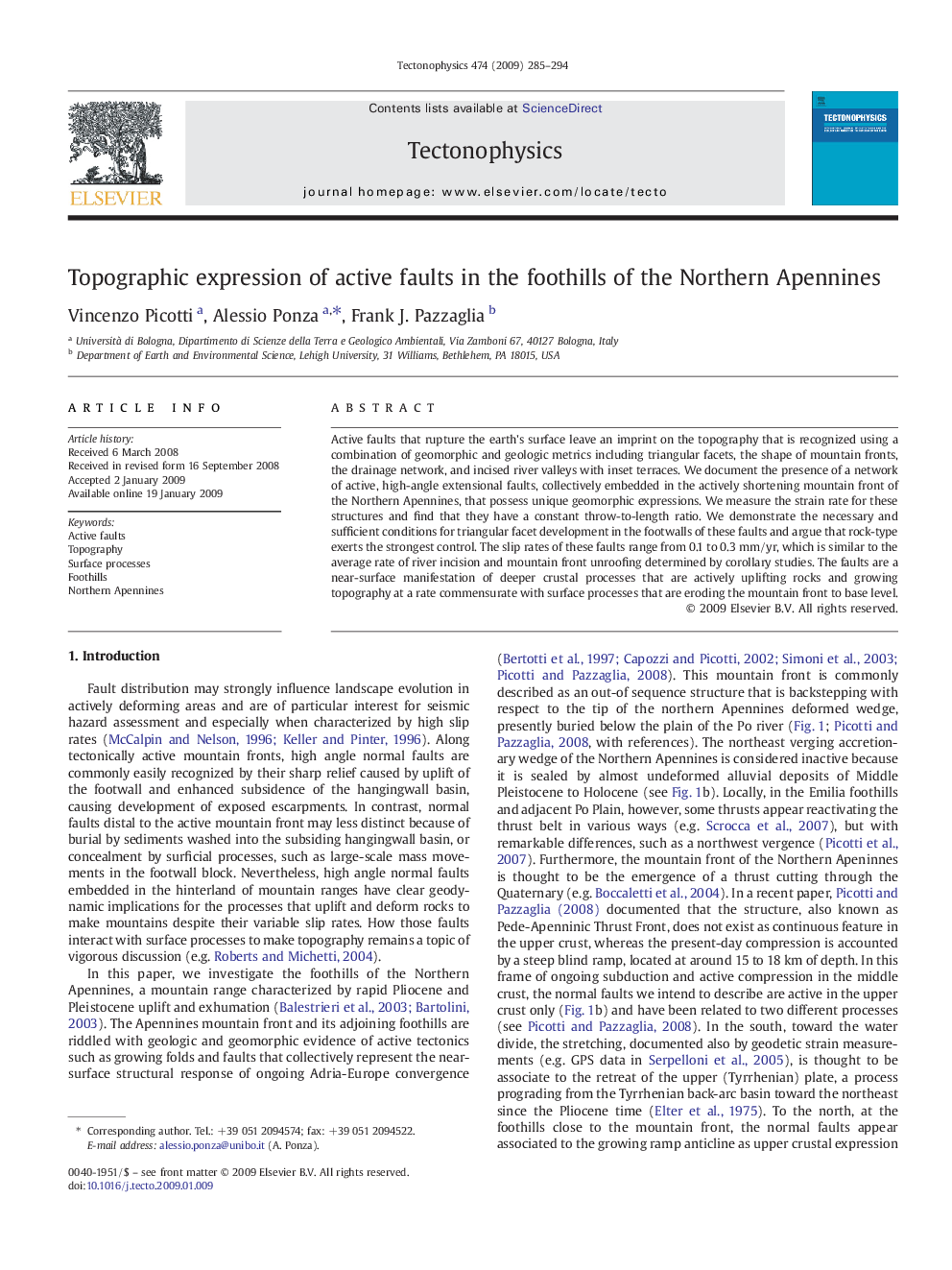| Article ID | Journal | Published Year | Pages | File Type |
|---|---|---|---|---|
| 4694120 | Tectonophysics | 2009 | 10 Pages |
Active faults that rupture the earth's surface leave an imprint on the topography that is recognized using a combination of geomorphic and geologic metrics including triangular facets, the shape of mountain fronts, the drainage network, and incised river valleys with inset terraces. We document the presence of a network of active, high-angle extensional faults, collectively embedded in the actively shortening mountain front of the Northern Apennines, that possess unique geomorphic expressions. We measure the strain rate for these structures and find that they have a constant throw-to-length ratio. We demonstrate the necessary and sufficient conditions for triangular facet development in the footwalls of these faults and argue that rock-type exerts the strongest control. The slip rates of these faults range from 0.1 to 0.3 mm/yr, which is similar to the average rate of river incision and mountain front unroofing determined by corollary studies. The faults are a near-surface manifestation of deeper crustal processes that are actively uplifting rocks and growing topography at a rate commensurate with surface processes that are eroding the mountain front to base level.
